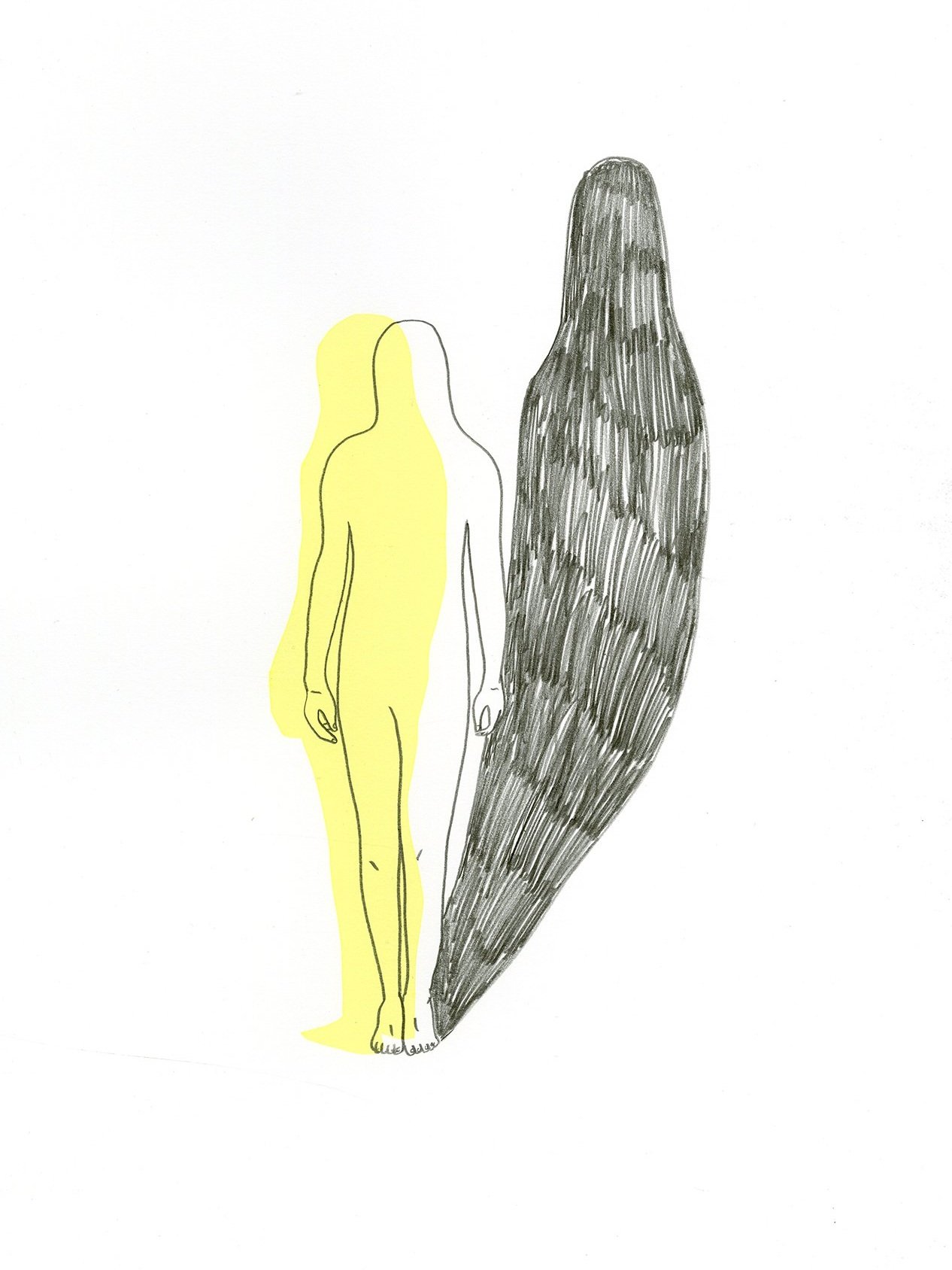Jerome Early-Career Printmaking Residents Sarah Evenson, Ryan Gerald Nelson, and Savannah Bustillo have been doing research, preparing, and developing artwork since September 2021. The first in-progress check in of the residency happened in mid-November with Laura Wertheim Joseph (curator at the Minnesota Museum of American Art). In the coming months, the artists will meet with guest critics three more times before their exhibition opens in May.
Savannah Bustillo, Untitled (in-progress monotype)
Savannah’s work focuses on the ways language practices shape her identity as a queer second-generation bilingual Latina woman. By taking small discarded objects, sounds, and movements that seem silent and insignificant, she reemphasizes them to show both the strength and trauma in marginality. A key aspect she explores is the relationship between “authenticity” and race. The body of work she is creating during the residency continues exploring these dynamics, including research into the history of racist phraseology and teaching practices, historical shibboleths, and the semantic concept of assimilation (when phonemes are adjusted by the phonemes that come before or after them, done often in English).
Sarah Evenson, Untitled (in-progress screenprint)
Sarah uses their experience as a queer transgender artist to create books, zines, prints, and pieces of writing that explore queerness, transformation, embodiment, and the subversion of structural hierarchies. In making this work, they are not interested in normalizing queer and trans lived experience. Rather, their pieces are spaces in which queer joys are celebrated as strange, wild, and exuberant sites of social change and bodily resistance.
Ryan Gerald Nelson, The imperative to self preserve, screenprint
Ryan’s body of work visually and conceptually investigates his own developing theory of the Image by breaking down and depicting different stages of the metamorphosis of the Image as it traverses a myriad of mediated landscapes. By presenting the Image as being more analogous to a biological organism in an unforgiving ecosystem than simply a stable technological relic, Nelson points to the susceptibility of both the Image itself as well as the structures and apparatuses that make the Image possible or not. Nelson contends that our new world has proven that the Image—highly compressed, politicized, venerated, even iconoclastic by nature—exists in a perpetual state of precarity: its visual constitution open to manipulation, its meaning able to be rewritten many times over, often simultaneously, and its existence (digital or physical) certainly no guarantee.




